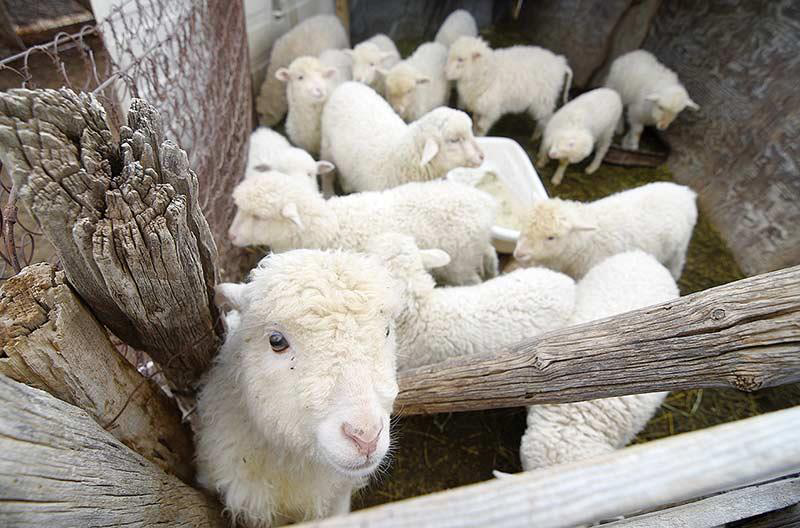Basic:


Rangelands
Rangelands are defined by the predominance of grasses, shrubs, forbs, and other grass-like plants. They include grasslands, shrublands, woodlands, savannahs, tundra, most deserts, and riparian and wetland plant communities, including marshes and wet meadows.
Because various ecosystems can be considered rangelands, they comprise nearly 30% of the landmass of the United States.1 Largely unsuitable for cultivation, rangelands are primarily used for grazing livestock. The value of rangelands, however, extend
beyond livestock support. Rangelands provide habitats for rich biodiversity, clean air and water, and open space for recreation and spiritual rejuvenation.
Because of the exceptional diversity of habitats and climatic regions that rangelands encompass, it is difficult to make broad generalizations on how they are impacted by climate change. Nevertheless, some long-term, common trends are apparent. An omnipresent threat to
rangelands is encroachment by non-native, invasive species, some of which benefit from increased levels of atmospheric CO2, are more drought tolerant, and grow more quickly. For example, invasive buffelgrass in the Sonoran Desert outcompetes native species for sunlight,
water, nutrients, and space, while also being a source for continuous, hotter burning wildfires.2 Higher in biomass than most native species, invasive species greatly increase the threat of wildfire, which is intensified by warmer, drier summers in the western
and midwestern United States. Changes to this natural cycle could continue to transform diverse desert scrub, scrub-steppe, and desert savannah/grasslands to monocultures of invasive grasses and other plant species.
As biodiversity is lost, landscapes will become more susceptible to erosion.3 In the West, where precipitation is expected to become less frequent and more intense, heavy rainfall events can wash away nutrient-rich topsoil, leading to a decline in soil productivity
and potential crop yield.4 Intervening dry periods cause wind erosion, which can have serious consequences for air quality, affecting human health. Higher amounts of dust settling on mountain snowpack accelerates snowmelt as the darker snow has a lower albedo.
This accelerated snowmelt exacerbates water shortages during the summer months.
Navajo Nation sheepherders depend on quality rangeland to raise their herds of sheep, a tradition central to their lives. The tradition began more than 500 years ago, when Spaniards brought sheep to what are now Navajo Nation lands. Not only do Diné people rely on sheep for
subsistence, sheep are part of their prayers and ceremonies.5 Historically, Diné shepherds utilized resources provided by their land to care for their herds, but due to climate change, these environments are so drastically different that this is no longer a viable
practice. The biomass on these rangelands used to be high enough for sheep to feed and be completely satiated, but due to drought, once lush grasslands are now dry, arid deserts. Now, Diné shepherds must purchase food, and in some instances, haul water for their livestock, which can
create a financial strain. Some shepherds hold out hope that the drought will end and their lands will once again sustain them and their herds.
European settlement has had a significant impact on the health of American rangelands, notably through the near extinction of bison in the Great Plains. After the mass slaughter of bison from 1871-1872, it was greatly understood how inextricably linked ecosystems are and
how the removal of just one species can have catastrophic impacts. Bison increase water availability, improve soil health, and encourage stronger grass roots.6 Areas where bison have been restored through conservation efforts have seen increased biodiversity and environmental
health, though most bison herds continue to live in fenced, fragmented habitats.7 Tribal Members of the Blackfeet Nation have prioritized reintroducing bison herds to the wild, noting the importance of the keystone species. In June 2023, they released a bison herd into
the Chief Mountain area. For the first time in 150 years, wild bison are roaming the landscape.
The transformation of much of the Great Plains from wildlife habitat to cropland has generated concern about reintroducing bison from farmers and ranchers. This intense debate will have severe consequences, which could be as extreme as feeding Americans or losing a
precious, currently endangered ecosystem.
Changes in land management practices and climate change have worked in tandem to negatively impact the health of our rangelands. These wonderfully diverse, unique ecosystems are at risk of becoming unproductive deserts should ecosystem restoration and conservation
not be prioritized. Drought will continue to lead to topsoil erosion and increase wildfire risks, which could result in extinction of native species. The changes in rangelands have already been devastating to some Indigenous Communities, and our land management decisions today will
determine if others face similar challenges.